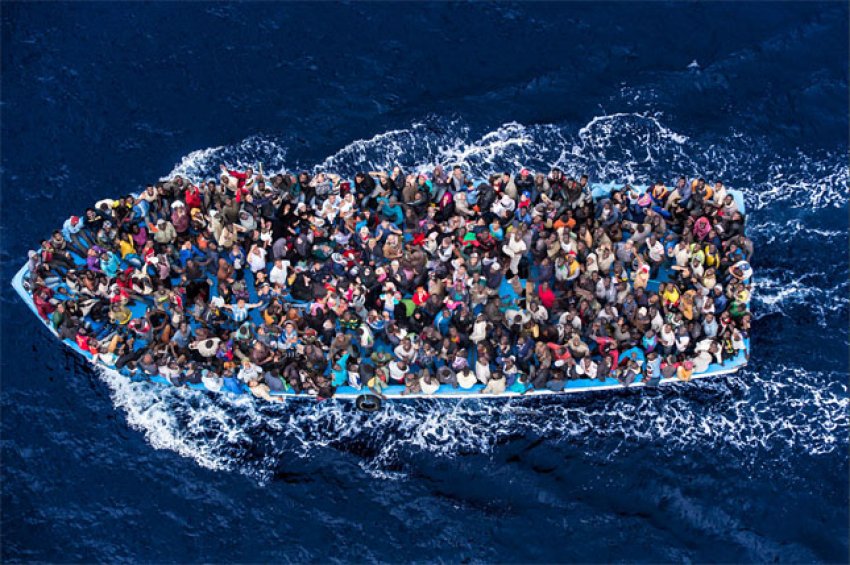
The burden of responsibility for the climate crisis is often placed on poorer nations. But the reality is that the main culprits continue to be the rich and powerful 1%.
Within the climate movement, some sections point to overpopulation as being one of, if not the main cause of the climate crisis.
This line is also used by right-wing governments to legitimise anti-immigrant and anti-refugee policies, under the guise of environmentalism.
Yet when we examine the facts, the argument that overpopulation or poorer nations are to blame for environmental degeneration begins to fall apart.
Figures show that countries with higher gross domestic product (GDP) and lower birth rates contribute far more to global carbon emissions than poorer nations, especially when looked at on a per capita basis. A 2015 Oxfam report revealed that the poorest half of the world’s population is responsible for only 10% of carbon emissions.
Yet, at the same time, they are also the most likely to bear the brunt of severe weather events linked to climate change.
The United Nations High Commissioner for Refugees (UNHCR) reported in 2017 that at least 22.5 million people had been forced to seek refuge due to “sudden onset” weather events, the majority of these from countries in the Global South.
Governments have already begun responding to this situation. For example, India has been building a “climate refugee fence”, guarded by 80,000 troops, to keep out refugees from Bangladesh, one of the countries hardest hit by the climate crisis.
In Austria, the conservative Austrian People’s Party (OVP) recently struck a deal with The Greens to form government where, in exchange for a promise to become carbon-neutral by 2040 and vague climate policy commitments, The Greens surrendered to the OVP’s demands for anti-immigration and Islamophobic policies.
As more climate refugees are forced to seek refuge in the Global North, we can expect more examples like this of attempts by the right to linking overpopulation to the climate crisis as a way to greenwash racist immigration policies.
Ultimately, focusing on overpopulation and climate refugees serves to deflect attention from the main culprits of the climate crisis. This includes the fossil fuel industry and the US military, the world’s single largest institutional consumer of hydrocarbons, whose carbon footprint is bigger than more than 140 countries.
Controlling the world’s population will do nothing to challenge them or change the fact that 100 companies produce more than 71% of all greenhouse gas emissions.
The idea that individual human beings are the cause of the climate crisis is false: capitalism, with its obsession with never-ending growth and profit, is to blame.
We need to change this system, which is designed in the interests of the wealthy 1%, if we want to save the climate. To do so we will need to build a powerful and sustained mass climate movement, one in which the populations of the Global South must be seen as allies, not targets.
Humanity is facing the threat of extinction. The burden of avoiding such a fate should not be placed on the shoulders of those who did not put us in this mess.
Instead, we must stand together to challenge the capitalist system and make sure that the real climate criminals are made to pay.